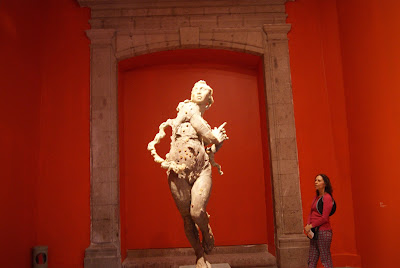Hace más
de 50 años, Bob Schalkwijk llegó a nuestro país, donde emprendió un
viaje de un mes a la Sierra Tarahumara, sin embargo, confesó el artista
holandés durante la inauguración de la muestra, aún no ha regresado
realmente.
 |
| Bob Schalkwijk "Valle".- Naráchi_Enero de 1974 |
Casi
siete mil fotografías de la Sierra Tarahumara integran la colección que
Schalkwijk ha logrado consolidar a lo largo de estos años y la
exposición reúne una selección de 35 imágenes que muestran la
interacción de los rarámuri con la naturaleza, pero también en su vida
cotidiana, sus festividades, su gastronomía y los paisajes donde
habitan.
 |
| Bob Schalkwijk "Danza de Matachines en el atrio del templo".- Naráchi_Enero de 1974 |
Alejandra Frausto, directora general de Culturas Populares de la Secretaría de Cultura, destacó que Tarahumara
es un homenaje al trabajo de Bob Schalkwijk, que muestra una mirada
acuciosa de más de 50 años, la cual nos hace conocer con sutileza y
respeto una de las regiones más apartadas y peculiares de nuestro país.
Museo Nacional de Culturas Populares
Av Miguel Hidalgo No.289
Coyoacán, Del Carmen,
04000 Ciudad de México, D.F.













